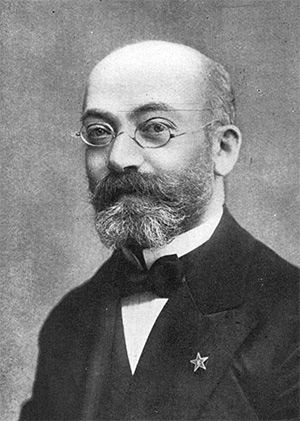Procursus
The following essay is adapted from a chapter I composed for a general anthropology textbook, Anthropology: Perspective on Humanity co-authored with my late colleague Marc J. Swartz (Swartz & Jordan 1976: 343-376), a work now long out of print. The format for each chapter of the textbook was to be an ethnographic “case,” followed by an “analysis of the case” highlighting the theoretical issues it raised, followed in turn by a broad discussion of how anthropology approached those issues. This essay was “the language chapter,” intended to introduce everything a student in an elementary college course needed to know about the anthropological study of language. (Linguistic anthropology has changed since then, of course, so the chapter you see here bears ever less resemblance to the original.)
As a “case,” I chose L.L. Zamenhof’s challenges in creating the language Esperanto. It was not quite parallel with other “cases” in the book, all of which involved multiple interacting characters, but it provided an excellent window on a very wide range of issues. If languages work this way or serve that purpose or are used thus, then how does one accommodate that feature when directly creating a new language? Did Zamenhof worry about it? How did he address it?

L. L. Zamenhof, an ophthalmologist in Warsaw in the late XIXth century, believed that the creation of an easily learned, politically neutral language would promote better relations between nations.
Universala Esperanto-Asocio
Zamenhof was by no means the only person ever to set out to create a new language, but he is alone in having created a new language that actually came to be used by a large body of speakers, both in his own lifetime and over more than a century from his era to our own. (As he famously said, “For a language to be worldwide it is not enough to call it that.” Por ke lingvo estu tutmonda, ne sufiĉas nomi ĝin tia.) In fact, nobody knows exactly how many people can speak Esperanto, any more than anybody knows how many people can play chess. It seems likely that there are more speakers of Esperanto than there are of, say, Icelandic. It is an interesting exercise to try to imagine a research plan to figure this out.
Zamenhof worked more from instinct than from theory, but he insightfully anticipated issues that received theoretical attention from academic researchers only decades later. Accordingly, it wasn’t a bad “case” for our textbook.
This text. Long before his death in 2011, Professor Swartz agreed that some chapters could be placed on-line to function as stand-alone essays for easy use in classes, with such revision as I thought advisable. (The Neolithic essays on this web site have such an origin —link— as does “A Medium’s First Trance,” originally the “case” from the chapter on religion —link.) But nothing was initially done to accomplish this for the language chapter.
Many years having passed since its composition, the language essay here has therefore been revised to function both
- as a quick introduction to anthropological insights into language (its original purpose) and
- as an illustration of the usefulness of Esperanto as a window on how language in general works (a new goal).
Revising it four decades after composing it, I have felt free to make many additions, excisions, and revisions great and small, for a new generation of readers. In addition to content revisions, some format changes have also been made:
- Footnotes, which are awkward in web readings, have been moved into the text, although sometimes at some cost to the smooth flow of ideas. (A couple of longer notes are incorporated as pop-up windows.)
- Since technology facilitates doing so, most of the charts and tables of the original textbook are retained here as simple scans. On the other hand, most of the original black-and-white photos have been replaced with color ones, and the total number of pictures has increased.
- Although the text was originally a single chapter with several parts, the parts are here displayed as chapters in themselves because students have argued that they are easier to navigate when separated.
- Interactive review quizzes have been added because students have found they facilitate understanding and recall. They are linked at the right side of screen from time to time.
This essay is obviously about the anthropology of language, and Esperanto is merely an entry point. Elsewhere on this web site is a professional article about the sociology of the movement that grew up using and supporting Esperanto, Esperanto & Esperantism, as well as lighter materials both about Esperanto and in Esperanto.
This essay does not cover writing systems. A separate web discussion is available called Writing: How It Started, What It Does, & How It Works.